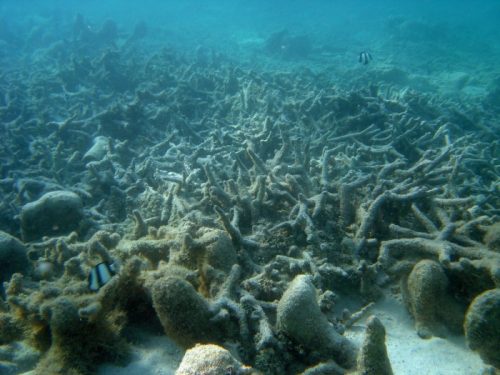- For The Record – Here
- Focus on Nature Based Solutions – Here
- Focus on Oceans – Here
- IPCC 6’th Assessment – Report
Scientists Present ‘Alarming’ Picture of Accelerating Glacier Loss
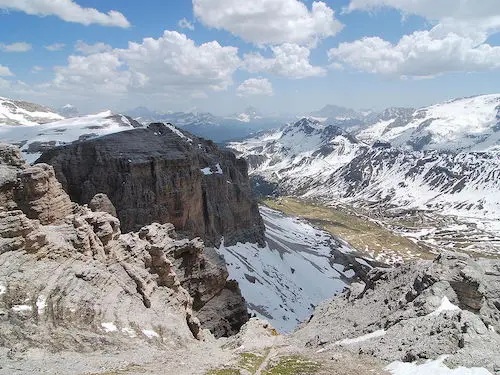
Feb 24, 2025 = the Energy Mix
The world’s mountain glaciers lost more than 6.5 trillion tonnes of ice to global heating between 2000 and 2023, and the rate of melt is accelerating, finds a groundbreaking study published in Nature.
This equates to an average annual loss of 273 billion tonnes—“about the daily water intake of every person on Earth for 30 years,” says [video] the European Space Agency (ESA), which is working to standardize ice-loss estimates to support global research and monitoring efforts.
“The melting of glacial ice around the world is reducing regional freshwater supplies and contributing to the ongoing rise in global sea levels,” writes the German Aerospace Center, a contributor to the study, describing the recent acceleration in ice loss as “significant and alarming.”
Atmospheric CO2 rise now exceeding IPCC 1.5C pathways
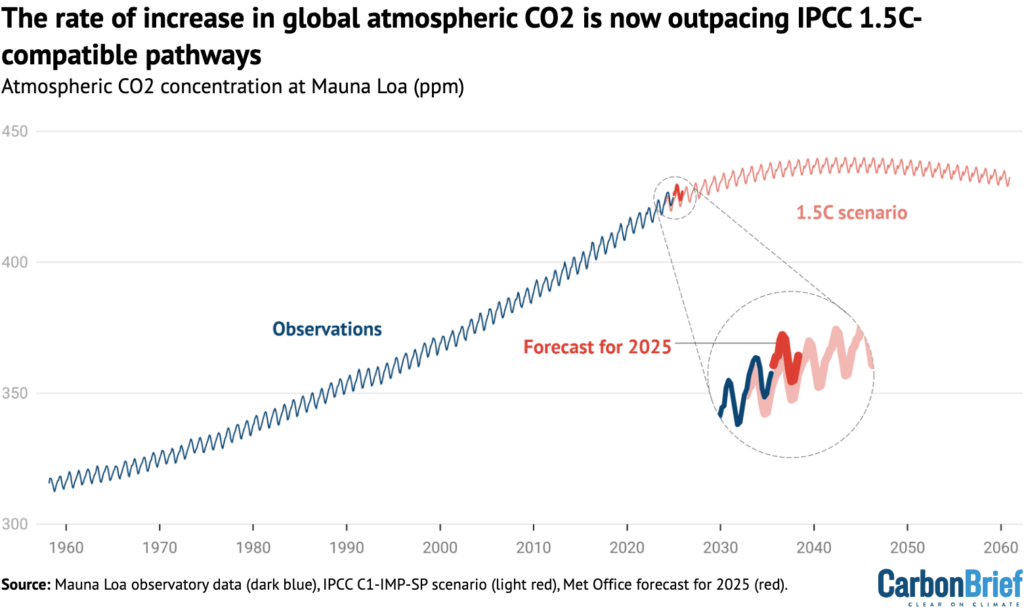
January 17, 2025 – Carbon Brief
This is what the latest data shows from the Mauna Loa observatory in Hawaii, where measurements of CO2 levels in the atmosphere have been collected for more than 60 years.
In 2024, the rise in atmospheric CO2 was one of the fastest on record.
Emissions of CO2 and other greenhouse gases from human activity have so far caused human-caused global warming to reach about 1.3C above pre-industrial levels.
If warming is to be limited to 1.5C, as set out in the Paris Agreement, the build-up of CO2 and other greenhouse gases in the atmosphere will need to slow to a halt and then go into reverse.
And, yet, the rise in atmospheric CO2 concentrations is still showing no signs of slowing.
IPBES nexus report: Five takeaways for biodiversity, food, water, health and climate
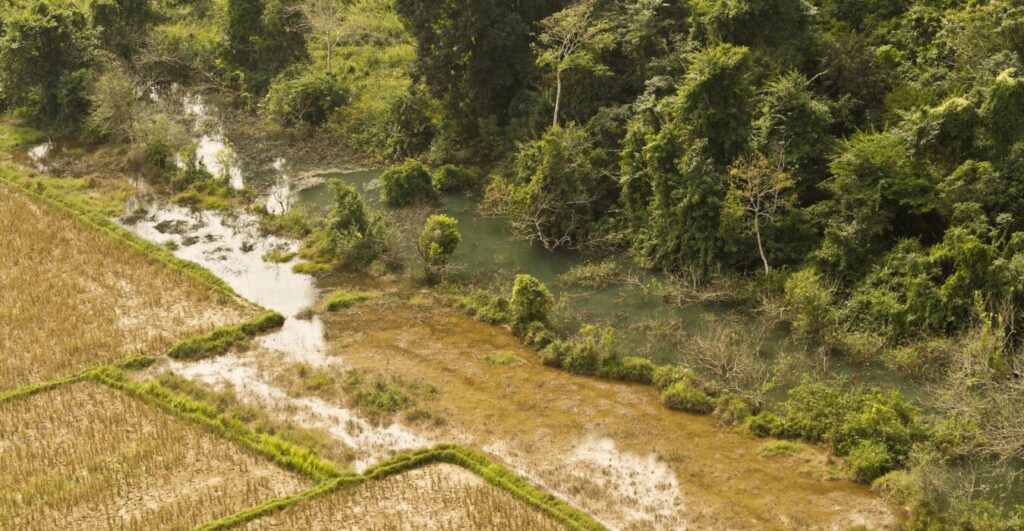
Dec 17, 2024 – Carbon Brief
“Fragmented governance” between biodiversity, climate change, food, water and health is putting all of those systems at risk, according to a major new report from the Intergovernmental Science-Policy Platform on Biodiversity and Ecosystem Services (IPBES).
The report, known as the “nexus assessment”, explores the interlinkages between climate change, biodiversity, food, water and human health.
It says that focusing on a single element of the nexus at the expense of the others will have negative impacts for both humans and the planet.
At the same time, many of the actions that can be taken to address nature loss will have co-benefits for the climate. More
Sounding the science-based alarm – Professor Johan Rockström
It is important to inspire change, by spreading the word on new solutions, and explaining the benefits of a rapid transition for our health, our ecosystems and our economies. But sometimes we also need to hear that we’re in deep shit – and that the time remaining to get us out of it is quickly vanishing. Watch Professor Johan Rockström’s 18-minute TED talk. Learn how the climate crisis is accelerating in a way that makes climate scientists very nervous – and hear him describe the path to a very different and much nicer future for us all.
U.S. LNG Exports Carry 33% Higher Climate Impact Than Coal, Howarth Paper Concludes.
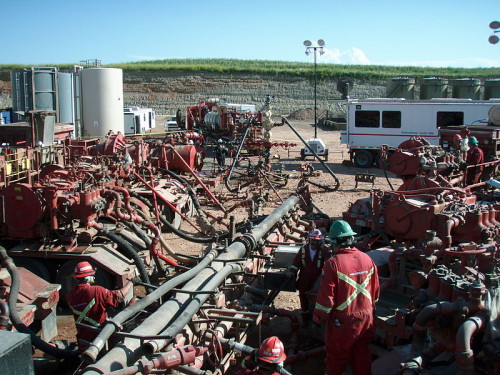
Oct 7, 2023 – The Energy Mix
Liquefied natural gas (LNG) exports from the United States carry a 33% larger climate impact than coal over a 20-year period, despite persistent industry efforts to brand it a cleaner fossil fuel, Cornell University environmental scientist Robert Howarth concludes in a peer-reviewed paper in the journal Energy Science & Engineering.
The difference is mostly due to methane leaks from U.S. shale gas production, the paper states, and to a lesser extent, methane slippage in ocean-going tankers that burn some of their cargo en route to their final destination. Methane is a shorter-lived greenhouse gas the carbon dioxide, but packs about 84 times the global warming potential over the crucial 20-year span when humanity will be scrambling to get climate change under control.
Human activities now fuel two-thirds of global methane emissions
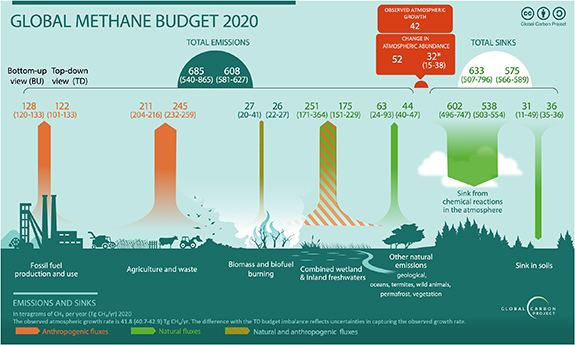
Methane (CH4) is the second most important anthropogenic greenhouse gas after carbon dioxide. It contributed 0.5 °C of warming in the 2010s relative to the late 1800s—two-thirds as much warming as CO2 (IPCC 2021). It is also far more potent than CO2 ton for ton, with a global warming potential (GWP) >80 and 30 times more than CO2 for the first twenty years and century after release, respectively
COP28: Fossil fuel phase-down vs. phase-out explained
Why is a full phase-out of fossil fuels necessary? Prof. Johan Rockström, Director of the Potsdam Institute for Climate Impact Research, explains. Watch. 3m:02s.
COP28 = Read the two letters, one for, the other against a fossil fuel phase out.
A full picture of planetary resilience: All boundaries mapped out, six of nine crossed
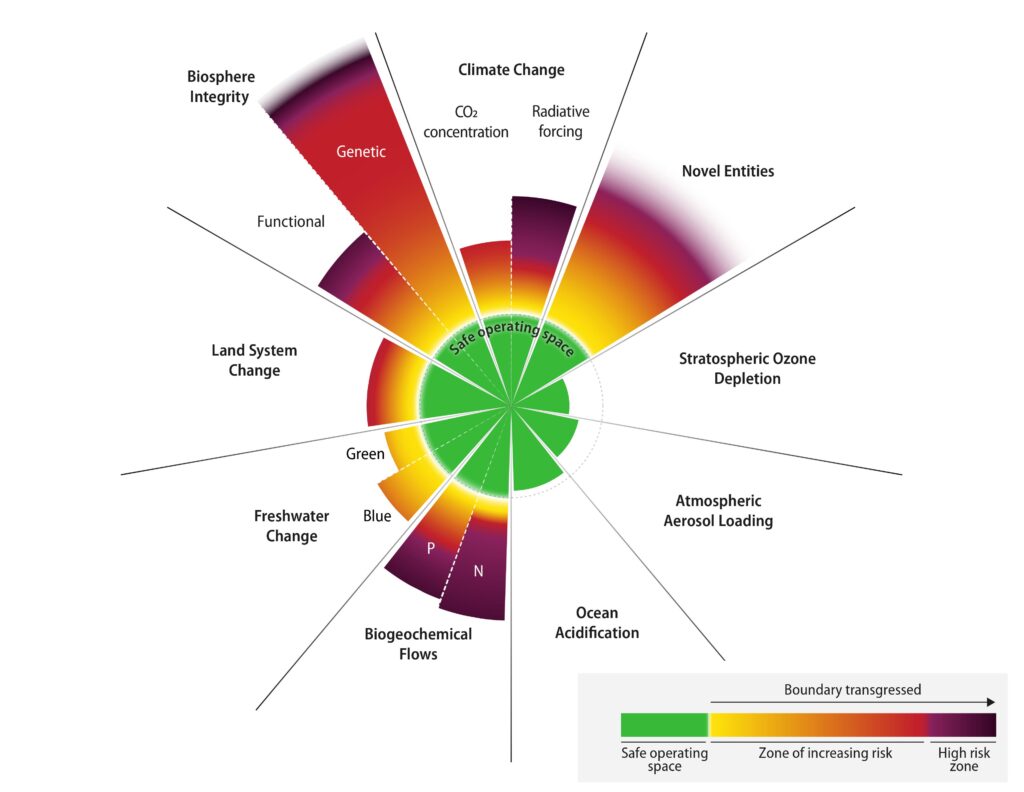
Sept 13, 2023 – Potsdam Institute for Climate Research
For the first time, an international team of scientists is able to provide a detailed outline of planetary resilience by mapping out all nine boundary processes that define a safe operating space for humanity. From global warming to the biosphere and deforestation, from pollutants & plastic to nitrogen cycles and freshwater: Six of nine planetary boundaries are being transgressed, while pressure in all those boundary processes is increasing, cutting-edge research published in the journal Science Advances shows.
Read more about the report – FAQs
The Mercury is Off the Charts
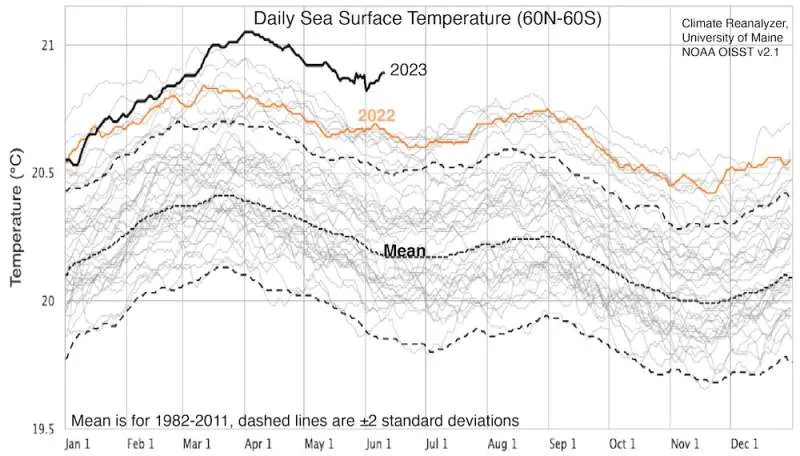
And the Fossil Fuel Industry is Off its Meds.
June 15, 2023 – Bill McKibben – The Crucial Years
We’ve reached the scariest moment yet in the climate saga: I noted in mid-April that there were all kinds of signs that a rapid increase in global warming was underway, and every day since has borne out that warning. We now have truly remarkable data about sea surface temperature—across the world’s oceans, and especially in the north Atlantic, we’re seeing numbers that aren’t just off the charts, they’re off the wall the chart is tacked to. It seems increasingly likely that 2023 will turn out to be the hottest year yet, even though a true El Niño won’t be fully underway till late summer or autumn. – more
Sudden Ocean Warming May Be ‘First of Many Heat Records to Shatter’
May 2, 2023 – the Energy Mix
The world’s oceans have suddenly spiked much hotter and well above record levels in the last few weeks, with scientists trying to figure out what it means and whether it forecasts a surge in atmospheric warming.
Some researchers think the jump in sea surface temperatures stems from a brewing and possibly strong natural El Niño warming weather condition plus a rebound from three years of a cooling La Niña, all on top of steady global warming that is heating deeper water below, The Associated Press reports. If that’s the case, they said, record-breaking ocean temperatures this month could be the first in many heat records to shatter.
Glaciologist Says New Melting Study ‘Frankly Scary. Even to Me.’

Apr 05, 2023 – Common Dreams
“Ice sheets are retreating fast today,” said one expert. “But we see traces in the seafloor that the retreat could go faster, way faster, and this is a reminder that we have not seen everything yet.”
Torrents of Antarctic meltwater are slowing the currents that drive our vital ocean ‘overturning’ – and threaten its collapse
March 29, 2023 – The Conversation
Off the coast of Antarctica, trillions of tonnes of cold salty water sink to great depths. As the water sinks, it drives the deepest flows of the “overturning” circulation – a network of strong currents spanning the world’s oceans. The overturning circulation carries heat, carbon, oxygen and nutrients around the globe, and fundamentally influences climate, sea level and the productivity of marine ecosystems.
Future warming from global food consumption

Mar 6, 2023 – nature.com – Nature Climate Change – analysis, open Access
We find that global food consumption alone could add nearly 1 °C to warming by 2100. Seventy five percent of this warming is driven by foods that are high sources of methane (ruminant meat, dairy and rice). However, over 55% of anticipated warming can be avoided from simultaneous improvements to production practices, the universal adoption of a healthy diet and consumer- and retail-level food waste reductions.
The ‘Last Ice Area’ is already disappearing
Scientists race to study Arctic lakes before they are lost forever.
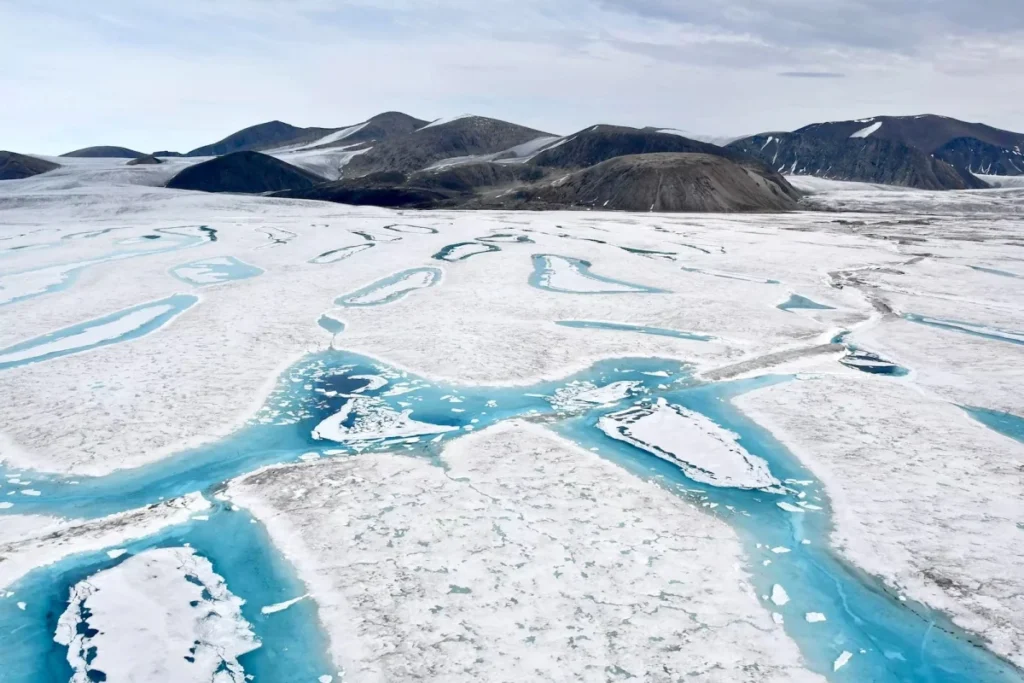
February 10, 2023 – Grist
…For years, scientists believed this area, home to the oldest and thickest ice in the northern hemisphere, would survive the worst effects of global warming.
But as Mueller and his team approached their old testing grounds, they could tell something was amiss. Where there had once been fingers of turquoise, there was now only the vivid white of ice and the ghostly remnants of melt water.
Milne Fjord’s epishelf lake had all but disappeared.
Exxon scientists in the 1970s accurately predicted climate change
Jan 12 2023 – NewScientist

Exxon scientists accurately predicted the pace and scale of climate change more than 40 years ago, according to a study that its authors say adds weight to claims the oil firm knew about and sought to downplay the risks posed by continued fossil fuel use.
Scientists working for Exxon between 1977 and 2003 accurately forecasted the rate at which global average temperatures would rise as a result of carbon emissions, correctly predicted that human-caused global warming would first be detectable by around 2000 and reasonably estimated how much carbon dioxide would lead to dangerous warming, according to the study.
The Fusion Breakthrough Suggests That Maybe Someday We’ll Have a Second Sun
December 12, 2022 – Bill McKibben – the New Yorker

On Tuesday, the Department of Energy is expected to announce a breakthrough in fusion energy: according to early reports, scientists at the government’s Lawrence Livermore National Laboratory, in California, have succeeded for the first time in making their complex and expensive machinery produce more power than it uses, if only for an instant.
It’s a breakthrough of great significance—in essence, the researchers are learning to build a second sun. And it was greeted with the requisite hosannas—the Washington Post described it as a “holy grail,” a “major milestone in the decades-long, multibillion-dollar quest to develop a technology that provides unlimited, cheap, clean power.”
That it comes with equally requisite caveats does not diminish the glory of the achievement, but they’re important, too. As a fusion expert at the University of Cambridge, in England, told CNN on Monday, “This result is miles away from actual energy gain required for the production of electricity.
World on brink of five ‘disastrous’ climate tipping points, study finds
September 8, 2022 – Damian Carrington – the Guardian
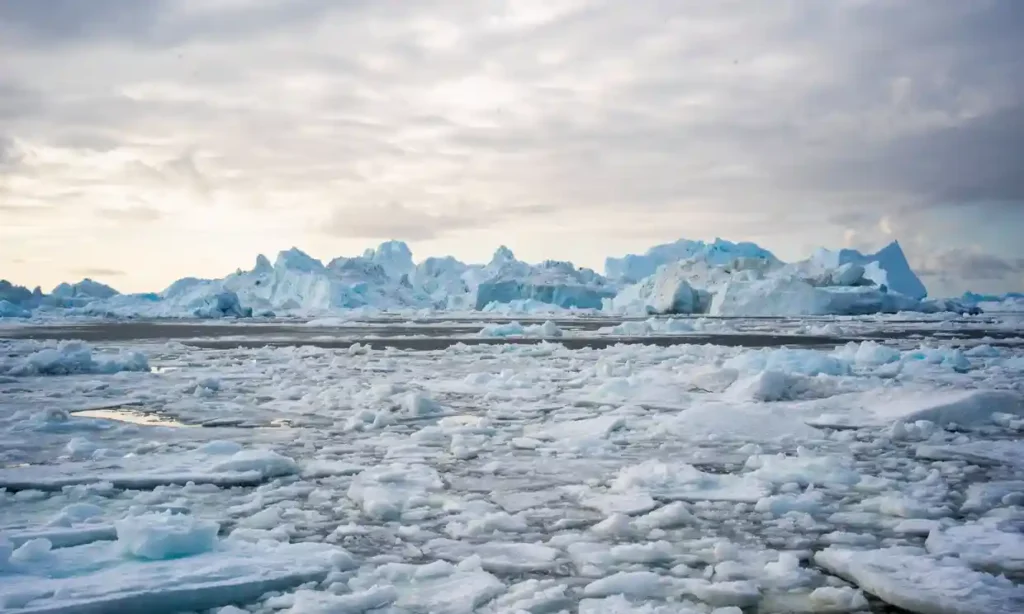
The climate crisis has driven the world to the brink of multiple “disastrous” tipping points, according to a major study.
It shows five dangerous tipping points may already have been passed due to the 1.1C of global heating caused by humanity to date.
These include the collapse of Greenland’s ice cap, eventually producing a huge sea level rise, the collapse of a key current in the north Atlantic, disrupting rain upon which billions of people depend for food, and an abrupt melting of carbon-rich permafrost.
New Study Warns Swaths of Amazon Have Already Passed Key ‘Tipping Point’
September 5, 2022 – Jessica Corbett – Common Dreams
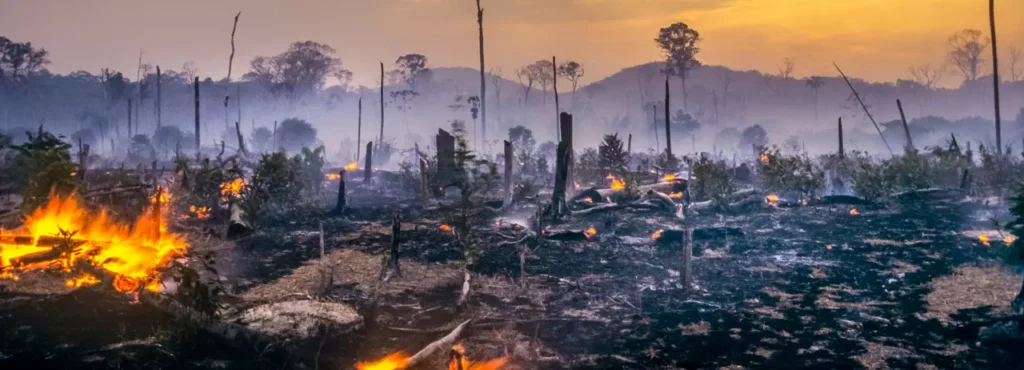
…”The rainforest’s abilities to store carbon and regulate precipitation are indicators of its capacity to survive… and studying them can also reveal the effects of forest fires beneath the canopy, which satellite images can miss,” New Scientist reported, summarizing Marlene Quintanilla of RAISG.
…”The tipping point is not a future scenario but rather a stage already present in some areas of the region,” the study states, according to The Guardian.
The ocean response to climate change guides both adaptation and mitigation efforts
July 2022 – Atmospheric and Oceanic Science Letters – Volume 15, Issue 4,
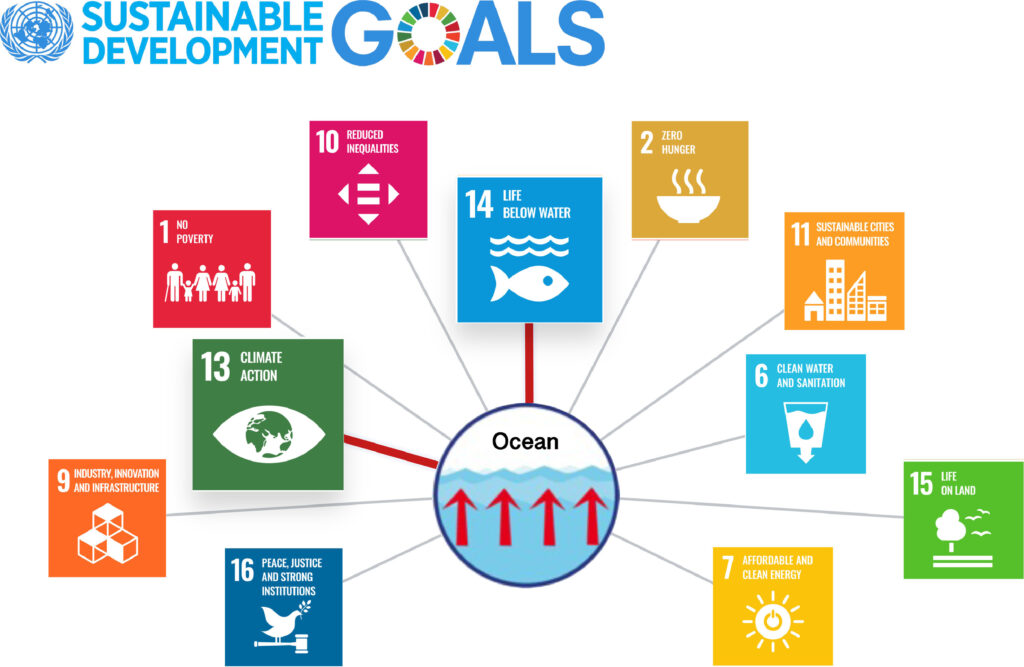
Abstract
The ocean’s thermal inertia is a major contributor to irreversible ocean changes exceeding time scales that matter to human society. This fact is a challenge to societies as they prepare for the consequences of climate change, especially with respect to the ocean. Here the authors review the requirements for human actions from the ocean’s perspective. In the near term (∼2030), goals such as the United Nations Sustainable Development Goals (SDGs) will be critical.
Over longer times (∼2050–2060 and beyond), global carbon neutrality targets may be met as countries continue to work toward reducing emissions. Both adaptation and mitigation plans need to be fully implemented in the interim, and the Global Ocean Observation System should be sustained so that changes can be continuously monitored.
In the longer-term (after ∼2060), slow emerging changes such as deep ocean warming and sea level rise are committed to continue even in the scenario where net zero emissions are reached. Thus, climate actions have to extend to time scales of hundreds of years. At these time scales, preparation for “high impact, low probability” risks — such as an abrupt slowdown of Atlantic Meridional Overturning Circulation, ecosystem change, or irreversible ice sheet loss — should be fully integrated into long-term planning.
Explainer: Can climate change and biodiversity loss be tackled together?
June 16, 2022 – Daisy Dunne – Carbon Brief
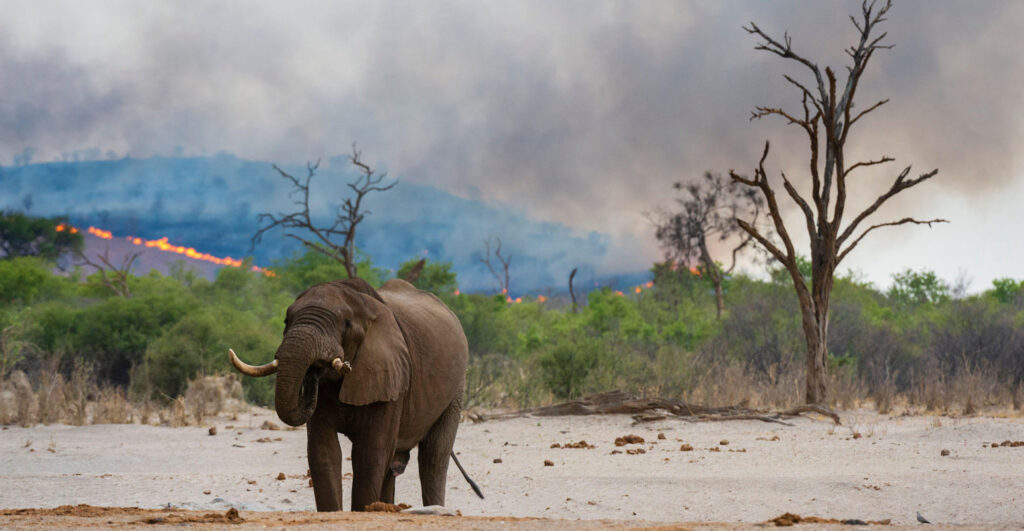
A wildfire racing across a hillside has become emblematic of climate change. And for good reason: a quarter of the world’s natural landscapes now face longer fire seasons as a result of warming and shifts to rainfall, according to a recent landmark climate report.
But there is another global threat that worsens the risk of fire. Scientists have shown that degraded ecosystems – those that have seen their unique blend of species diluted by human disturbance – are more likely to succumb to blazes.
‘Off the Scale’: Warmer Arctic Ocean Fueling Climate Feedback Loop Faster Than Previously Known
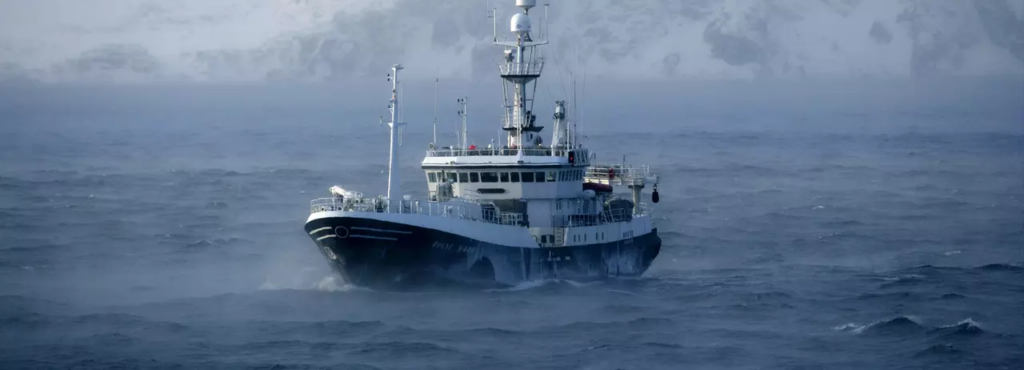
“This is one of the scariest reports I have ever seen,” said one climate scientist in response to new study.
June 15, 2022 – JON QUEALLY – Common Dreams
New scientific research published Wednesday shows the waters in the North Barents Sea are warming at a rate that is much more rapid than most climate models have predicted, with worrying implications about feedback loops for the larger Arctic region and far beyond.
Atmospheric CO2 Hits Another All-Time High

Atmospheric carbon dioxide levels measured at Hawai’i’s Mauna Loa Observatory breached 420 parts per million (ppm) in April for the first time in human history.
Considered the gold standard for accurate measurements of atmospheric CO2, the new measurements were released by the National Oceanic and Atmospheric Administration (NOAA), reports the Independent.
The NOAA data release shows CO2 levels hitting 420.23 ppm in April, eight years after they breached 400 ppm (400.2 ppm) in May, 2013.
It’s 70 degrees(fahrenheit) warmer than normal in eastern Antarctica. Scientists are flabbergasted.
March 18, 2022 – By Jason Samenow and Kasha Patel – Washington Post
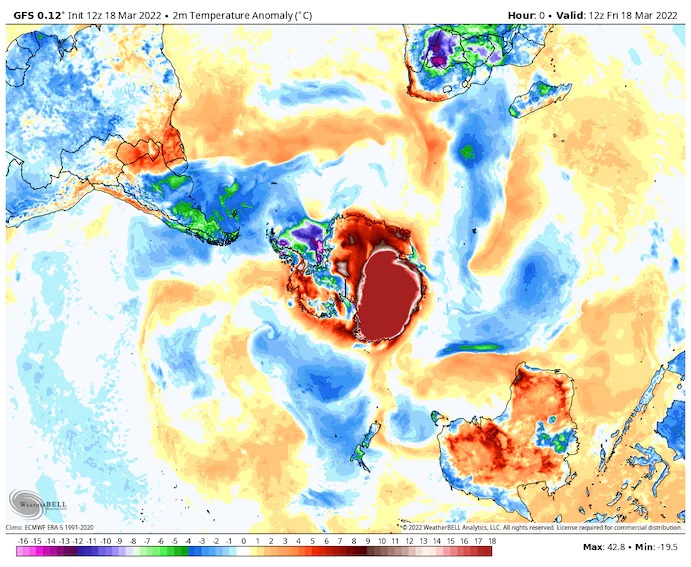
‘
The coldest location on the planet has experienced an episode of warm weather this week unlike any ever observed, with temperatures over the eastern Antarctic ice sheet soaring 50 to 90 degrees above normal. The warmth has smashed records and shocked scientists.
“This event is completely unprecedented and upended our expectations about the Antarctic climate system,” said Jonathan Wille, a researcher studying polar meteorology at Université Grenoble Alpes in France, in an email.
“Antarctic climatology has been rewritten,” tweeted Stefano Di Battista, a researcher who has published studies on Antarctic temperatures. He added that such temperature anomalies would have been considered “impossible” and “unthinkable” before they actually occurred.
Heatwaves at both of Earth’s poles alarm climate scientists
March 20, 2022 – the Guardian
and
Antarctic ice shelf nearly the size of Los Angeles collapsed as temperatures soared to 40 above normal
March 25, 2022 – By Rachel Ramirez and Hafsa Khalil – CNN
Ice shelf holding back keystone Antarctic glacier within years of failure
Dec 13, 2021 – Paul Voosen – Science

Breakup of the Thwaites eastern shelf will ramp up sea level rise
An alarming crackup has begun at the foot of Antarctica’s vulnerable Thwaites Glacier, whose meltwater is already responsible for about 4% of global sea level rise. An ice sheet the size of Florida, Thwaites ends its slide into the ocean as a floating ledge of ice 45 kilometers wide.
Earth’s tipping points could be closer than we think. – Our current plans won’t work.
Sept 9, 2021 – George Monbiot – the Guardian

If there’s one thing we know about climate breakdown, it’s that it will not be linear, smooth or gradual. Just as one continental plate might push beneath another in sudden fits and starts, causing periodic earthquakes and tsunamis, our atmospheric systems will absorb the stress for a while, then suddenly shift. Yet, everywhere, the programmes designed to avert it are linear, smooth and gradual.
Climate change is driving extreme weather events around the world in 2021

September 6, 2021 – Michael Mann interviewed by Steve Curwood
Extreme, record-breaking weather is happening around the world. Thousand-year floods are drowning Europe and Asia, and unprecedented heat and drought have afflicted western North America, leading to historically low reservoirs and sparking wildfires that are destroying towns and degrading air quality for thousands of miles.
BREAKING: Deadly Western Heat Dome ‘Virtually Impossible’ without Climate Change
July 7, 2021 – the Energy Mix

Less than a week after a deadly “heat dome” devastated western Canada and the U.S. Pacific Northwest and burned Lytton, B.C. to the ground, an international science team is reporting that the blistering conditions would have been “virtually impossible” without climate change.
“Climate change, caused by greenhouse gas emissions, made the heat wave at least 150 times more likely to happen,” the World Weather Attribution Network said in a release.
‘TIPPING POINT CASCADE’ COULD SPEED CLIMATE DESTABILIZATION
JUNE 6, 2021 – the Energy Mix

New research is raising the alarm over a possible “domino effect” that could cause separate but interconnected climate systems to reach their tipping points at lower temperatures than previously estimated.
“In the next years or decades, we might be committing future generations to really severe consequences,” Ricarda Winkelmann.
“The Earth will get as warm as we make it, which means we’re the ones [that must] stop it,” Anders Levermann.
Collapse of West Antarctic Ice Sheet May Be Worse Than Scientists Predicted
May 21, 2021 – Olivia Rosane – Treehugger
:max_bytes(150000):strip_icc():format(webp)/GettyImages-578339368-b94d18e300dd432abca70c6e34c0ee8e.jpg)
It has been a long-cited statistic that the West Antarctic Ice Sheet contains enough ice to contribute around 10.8 feet to global sea-level rise.1
Now, a new study has found that it could raise water levels even higher than that—by as much as 3.2 feet or 30%—all because of a geological process that had previously been discounted.
The study, published in Science Advances late last month, focused on how the behavior of the bedrock beneath the West Antarctic Ice Sheet (WAIS) would impact its contribution to sea-level rise. Read more here
Atmospheric CO2 now hitting 50% higher than pre-industrial levels
Prof Richard Betts MBE, head of climate impacts research at the Met Office
the Carbon Brief – GUEST POSTS , 16 March 2021
…Records derived from ice core measurements show that the average global CO2 concentration in the atmosphere for 1750 to 1800 was around 278ppm. This is the value that the Intergovernmental Panel on Climate Change (IPCC) used as the pre-industrial baseline for CO2 in its fifth assessment report (pdf), published in 2013-14.

Atmospheric CO2 has been rising ever since – driving ongoing warming of the global climate. Now, in March 2021, levels have reached around 417ppm – a 50% increase over the 1750-1800 average.
See what the CO2 concentration at the Mauna Loa observatory in Hawaii is today- here.
Atlantic Ocean circulation at weakest in a millennium, say scientists
Fiona Harvey – Environment correspondent – the Guardian – Fri 26 Feb 2021

Further weakening of the Atlantic Meridional Overturning Circulation (AMOC) could result in more storms battering the UK, more intense winters and an increase in damaging heatwaves and droughts across Europe. A weakened Gulf Stream would also raise sea levels on the Atlantic coast of the US. Read more here.
Why the Ocean is Important to Everyone
Lecture by Prof. Stefan Rahmstorf – February 9, 2021

